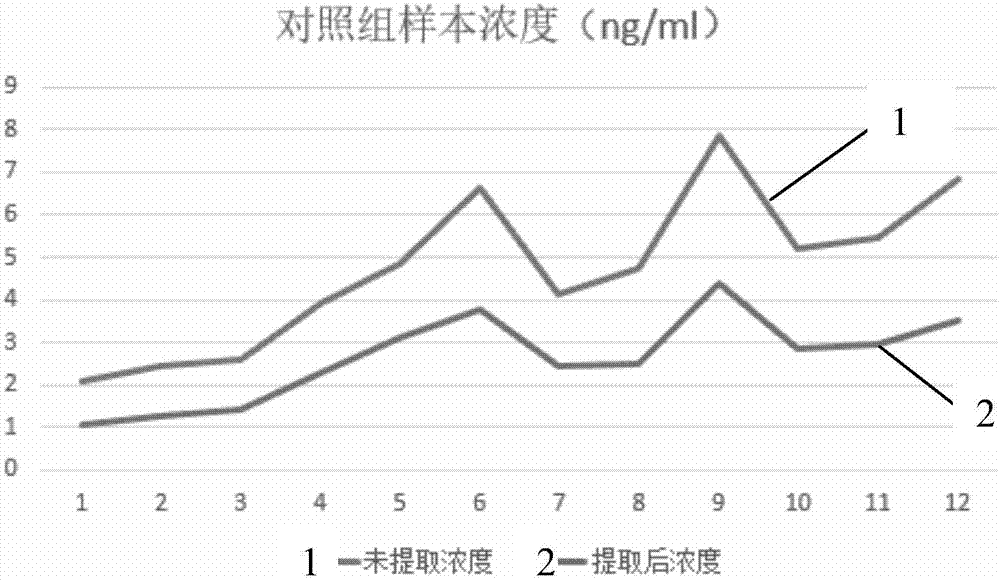Application of hTERT (human Telomerase Reverse Transcriptase) gene serving as reference gene in direct detection of content of cfDNA (cell-free Deoxyribonucleic Acid) in blood plasma by utilizing qPCR (quantitative Polymerase Chain Reaction)
An internal reference gene and gene technology, applied in the field of hTERT gene, can solve problems such as difficult operation and inability to reflect the true level of plasma free DNA, and achieve the effect of reducing background noise
- Summary
- Abstract
- Description
- Claims
- Application Information
AI Technical Summary
Problems solved by technology
Method used
Image
Examples
Embodiment Construction
[0018] Below in conjunction with accompanying drawing and specific embodiment the present invention is described in further detail:
[0019] 1. Preparation and dilution of the plasma to be tested: after separating the plasma from the blood, add protease (PK) for digestion; then remove the digested plasma and dilute it at a ratio of 1:40
[0020] 2 Preparation of qPCR reaction system
[0021]
[0022] mix (contains 10×PCR buffer 2μl, SYBR Green saturating dye 1μl, 5U / μl Taq DNApolymerase 0.2μl, 15mM MgCl 22μl, 10mM dNTP 0.5μl and ddH2O 7.3μl, wherein 10×PCRbuffer contains 10-40mM Tris-Cl, 50-200mM potassium chloride , 0-5.0mM dithiothreitol (DTT), 0-1.0mM ethylenediaminetetraacetic acid disodium calcium (EDTA), 0-20vol% ethylphenyl polyethylene glycol (Nonidet) P-40, 0-2.0vol% Tween 20 (Tween20), 30-70vol% glycerin and stabilizer (pH7.0-10.0))
[0023] 3 Set up the qPCR reaction program
[0024]
[0025] 4. Analyze quantitative data: confirm that the amplification effi...
PUM
 Login to View More
Login to View More Abstract
Description
Claims
Application Information
 Login to View More
Login to View More - R&D
- Intellectual Property
- Life Sciences
- Materials
- Tech Scout
- Unparalleled Data Quality
- Higher Quality Content
- 60% Fewer Hallucinations
Browse by: Latest US Patents, China's latest patents, Technical Efficacy Thesaurus, Application Domain, Technology Topic, Popular Technical Reports.
© 2025 PatSnap. All rights reserved.Legal|Privacy policy|Modern Slavery Act Transparency Statement|Sitemap|About US| Contact US: help@patsnap.com



